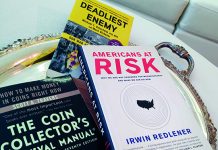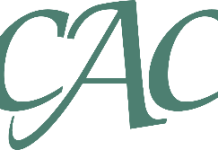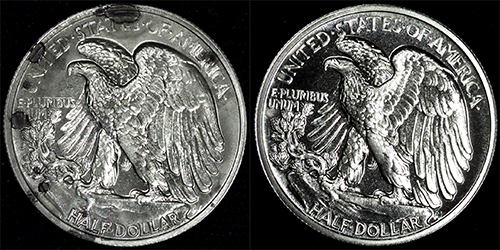
By David J. Camire and Richard S. Montgomery
Improper storage and exposure to harsh environments can diminish a coin’s eye appeal, grade, and, in some cases, cause permanent damage. In 2001, Numismatic Conservation Services (NCS) was established to remedy these issues by providing professional conservation services for coins that suffer from harmful surface contaminants and unattractive spots, haze, or tarnish.
Unlike amateur attempts at cleaning, which can cause hairline scratches and other damage, NCS takes a scientific approach that preserves and protects a coin’s originality. NCS will never perform repairs such as filling holes or smoothing scratches, or do any type of mechanical alteration. The techniques used by NCS are non-invasive and widely accepted by industry experts.
Conserve NOT Clean
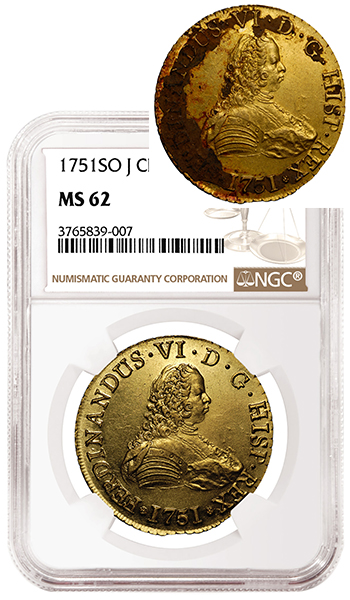
Many collectors choose to have their coins conserved by NCS before they are graded by Numismatic Guaranty Corporation (NGC), an affiliated company. NCS conservation often results in enhanced eye appeal and will stabilize a coin’s surfaces. It is important to understand that NCS is not an “upgrade service,” however, and while its work can sometimes result in a higher grade at NGC, this is never guaranteed.
We have presented a series of photographs here that illustrate uncertified coins before conservation and certified by NGC after NCS non-invasive techniques were applied.
When a coin is submitted to NCS, it is first evaluated by a specialist to determine whether it will benefit from conservation. If NCS believes that the coin will not benefit from conservation, it is not conserved and instead is transferred directly to NGC for authentication and grading.
If NCS believes that conservation will benefit the coin, it will determine the appropriate method or methods and conserve it in its state-of-the-art lab. After conservation, the coin is then transferred to NGC for authentication and grading.
Among the coins that can benefit from NCS conservation are those that have been improperly stored, such as in packaging that contains polyvinyl chloride (PVC), a plasticizer used in many soft coin “flips.” Over time, the PVC leaches onto the coin’s surfaces and leaves a green residue that can cause permanent damage if left untreated. NCS pioneered can safely remove these harmful surface contaminants and often dramatically improve a coin’s eye appeal. Unlike improper cleaning, which will permanently impair a coin’s surfaces, professional conservation from NCS reveals a coin’s originality.
Among the coins that can benefit from NCS conservation are those that have been improperly stored, such as in packaging that contains polyvinyl chloride (PVC), a plasticizer used in many soft coin “flips.”
Maintain Originality
Other coins that can benefit from NCS conservation include coins with haze, gold coins with copper spots, coins with detritus or encrustations, and artificially toned coins.
There are certain issues that cannot be addressed by NCS conservation. NCS does not make any mechanical repairs because doing so would alter a coin’s originality. Scratches, holes, and other damage therefore cannot be addressed by NCS conservation. A comprehensive list of coins that can and cannot benefit from NCS conservation, along with helpful images, is available at NGCcoin.com/NCS.

NCS has a proven record of expertise and professionalism. Over the last 17 years, NCS has conserved more than 1 million coins, tokens, and medals, including rarities from the Smithsonian Institution and tens of thousands of shipwreck-recovered coins. The American Numismatic Association (ANA), the only coin collecting organization chartered by the U.S. Congress, and the Professional Numismatists Guild (PNG) have both named NCS their conservation service of choice.
Collectors and dealers benefit from NCS’s affiliation with NGC, the world’s largest third-party coin authentication and grading service. Founded in 1987, NGC has certified more than 41 million coins, tokens, and medals from virtually every country, past and present.
In 1995, it was named the official grading service of the ANA and PNG. NCS is not only able to leverage the expertise of NGC’s more than 30 full-time graders, but it can also offer submitters a streamlined process where coins are conserved and then seamlessly transferred for authentication, grading, and encapsulation.
Authenticate, Grade, Conserve
When a coin is submitted for NGC grading, it is first evaluated for authenticity. NGC’s graders have numerous resources to assist them in authenticating coins, including a comprehensive image catalog, X-ray fluorescence spectroscopy, and other equipment.
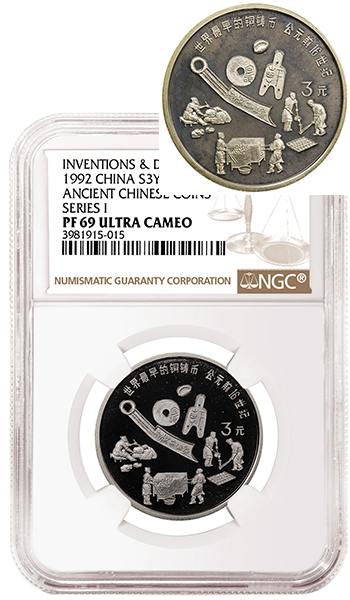
If determined to be authentic, a coin is then assigned a grade to describe its state of preservation. Most coins are graded according to an internationally recognized scale of 1 to 70. Certain coins, however, have surface issues such as scratches or damage that preclude a numeric grade. These coins receive an adjectival NGC Details grade.
Coins conserved by NCS may receive either a numeric grade or an NGC Details grade. Nothing that NCS does will cause a coin to receive an NGC Details grade, but the coin may have already had issues such as scratches, damage, or even an earlier attempt at cleaning that may result in an NGC Details grade.
Multiple professional graders examine every coin to reach a consensus grade. To ensure impartiality, NGC graders never know the identity of a coin’s submitter and strict procedures are in place to prevent conflicts of interest.
Preserve and Protect
Once graded, coins are encapsulated in NGC’s secure, tamper-evident holder designed for long-term preservation and protection. The NGC holder – the same used by the Smithsonian Institution and other museums – features a certification label with the coin’s description, NGC grade, and unique NGC certification number, as well as a number of security elements.
As an added measure of protection, NGC has imaged coins after encapsulation since October 2008 and has made these images available for free on its website at NGCcoin.com/verify. These images help prospective buyers verify that the NGC holder is genuine and has not been tampered with.
Certification by NGC removes uncertainly about authenticity and grade. In fact, every U.S. and world coin certified by NGC is guaranteed to be genuine and not over-graded. This adds safety, transparency, and confidence to the numismatic marketplace, resulting in greater liquidity and higher prices realized.
Collectors can submit directly to NCS and NGC if they are a paid member of the NGC Collectors Society (memberships start at $25 per year). For more information, visit NGCcoin.com/join.
About the Authors: David J. Camire and Richard S. Montgomery
Mr. Camire is the president of Numismatic Conservation Service, and Richard S. Montgomery is president of Numismatic Guaranty Corporation.


